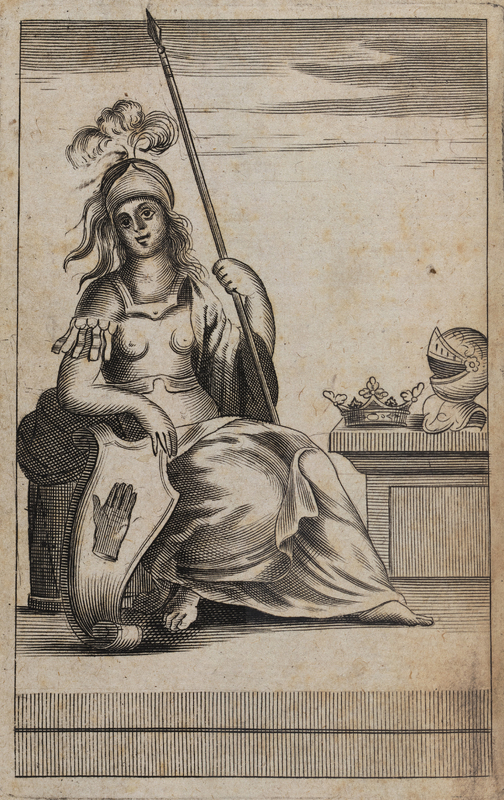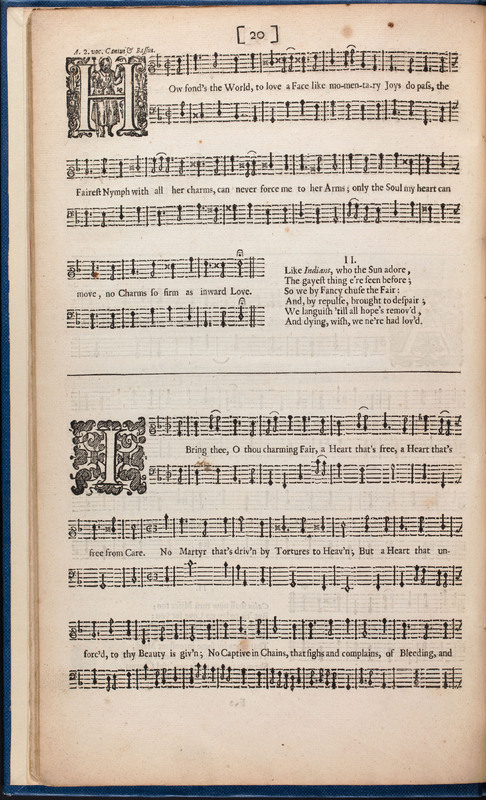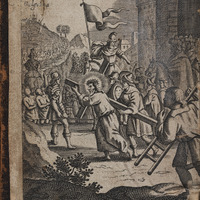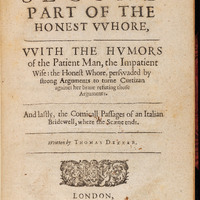Exhibit Contents
- Chez La Veuve
- Women as Skilled Printers
Women as Skilled Printers
While most women were strictly printers of text, some were involved in more difficult printing jobs, including sheet music, emblem books, and travel books with extensive maps. These types of printing were more labor-intensive and expensive to produce.
Heavily illustrated books on heraldry and emblem books had been popular for over a century when this item was printed. The engraved larger plates have been tipped in; smaller illustrations appear to be printed from woodcuts.
Anne Godbid and John Playford worked as partners to print music, a format which was considerably more difficult to produce than text. The music included in this volume was not composed by Playford, merely collected by him, and printed after the success of an earlier, similar book. While music printed from engraved plates began appearing in England in 1613, this music seems to be printed from movable type, using woodblock initials for ornamentation.
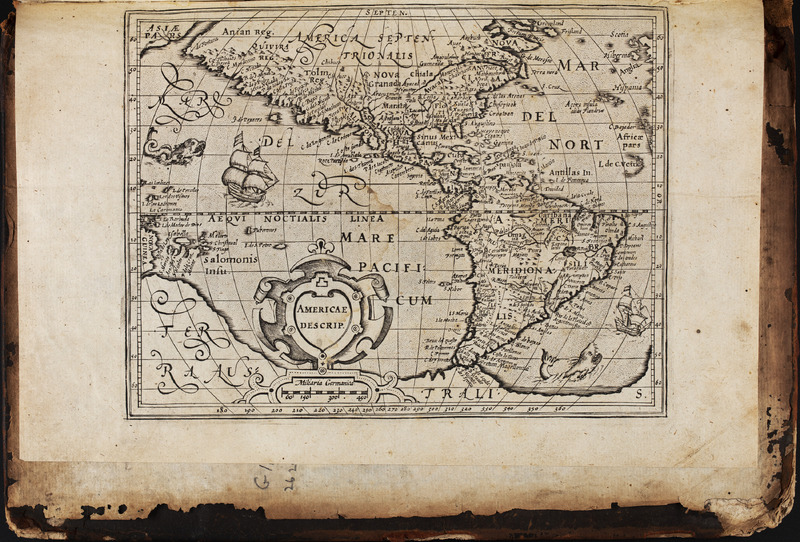
A new survey of the West-India's
Gage, Thomas. A new survey of the West India's. Second edition. London: By E. Cotes, and sold by John Sweeting, 1655.
This is the only extensive work on South America by an Englishman of the period. Ellen Cotes (fl. 1653-70?) was the widow of Richard Cotes (fl. 1635-52). John Sweeting (fl. 1639-61) was a bachelor bookseller who sold mostly poetry and popular literature.
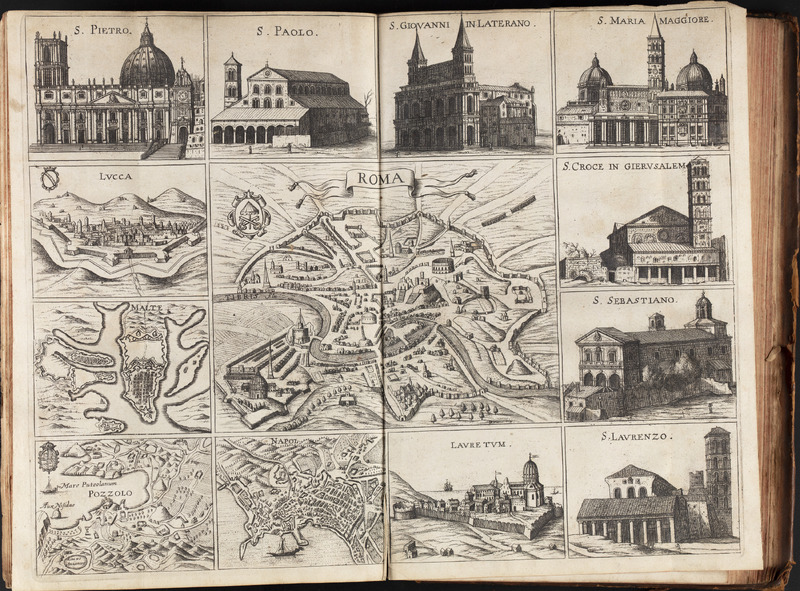
Italy, in its original glory
Schott, Frans. Italy, in its original glory. London: By S. Griffin, for H. Twyford, Tho. Dring, and I. Place, 1660.
Sarah Griffin produced this book for Henry Twyford (fl. 1641-75), Thomas Dring (fl. 1649-68), and John Place (fl. 1645-86), all booksellers who dealt primarily in law books. The engraved maps were printed separately from the text and tipped in. All of the ornamentation included within the text was produced using woodcuts.
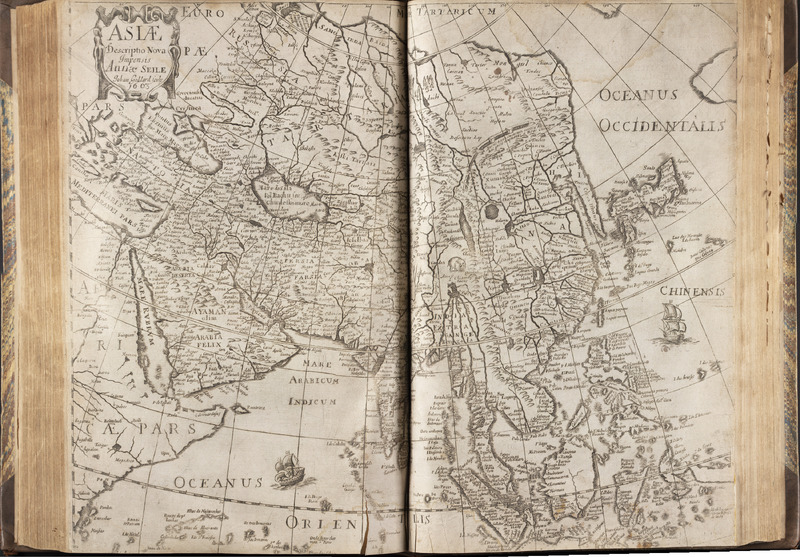
Cosmographie
Heylyn, Peter. Cosmographie. London: For Anne Seile, and are to be sold by George Sawbridge, Thomas Williams, Henry Brome, Thomas Basset, and Richard Chiswell,1669.
Peter Heylyn (1599-1662) was a strong proponent of British exploration, especially of the Americas. This large tome, published after his death, is not only a history and travel book, but an enticement to its readers to support exploration and colonization by the British government. Anne Seile (fl. 1661-69) was likely the widow of Henry Seile (fl. 1619-1661), a bookseller. George Sawbridge (1647-81), Thomas Williams (fl. 1662-67), Henry Brome (fl. 1657-69), Thomas Basset (fl. 1659-93), and Richard Chiswell (fl. 1666-1711) were all booksellers and publishers as well. A book such as this would have been expensive to produce, thus necessitating the involvement of so many publishers. It is likely, however, that Seile was in charge of coordinating the printing, since she is given primary "billing" on the title page.
